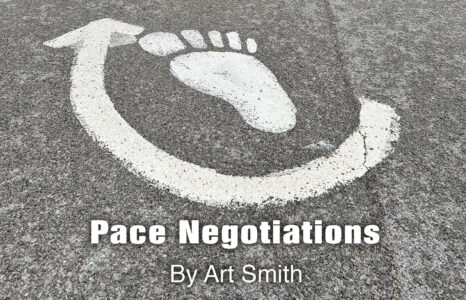The Way I See It: Post-war era saw a boom in Mid-Ohio Valley job opportunities

Union Carbide during construction along Ohio 7 around 1950. (Photo Provided)
When World War II ended 80 years ago, the nation, and the Mid-Ohio Valley, quickly began converting to the peacetime production of goods needed both domestically and in war-ravaged countries abroad.
Old factories would be converted back to their pre-war uses, and new facilities would be planned to manufacture new materials, many of which had been developed during the war.
There would be many new production facilities built, providing thousands of jobs for those returning from their wartime service.
The names of some of them may have changed, but most are still producing materials used all over the world.
On Aug. 20, 1945, The Parkersburg Sentinel ran a story that officials from DuPont had confirmed their plans to build a massive facility near Parkersburg to manufacture nylon. The material had been first manufactured in the 1930s. During the war the material was used to make parachutes.
The article outlined that the plant would be built on land in Washington, W.Va., that had been farmland until that time. The 400-acre plant would employ 2,000 people when completed and use as much energy as the entire city of Parkersburg. The site was chosen because of the proximity to rail and river, and by the fact that it was high enough that floods would not reach it. The large area of flat land was perfect for building a large industrial facility.
Although parts of the plant have changed names over the years, it still operates at the same location.
Large industrial facilities would continue to be built in the valley, including three years later, a giant facility in Washington County near Marietta.
In the Parkersburg Sentinel on Aug. 30, 1948, industrial giant Union Carbide announced plans to build a massive facility along Ohio 7 midway between Belpre and Marietta. The first part of the plant would make ferro-alloy, a key ingredient in the making of steel. It would draw so much power that a coal powered generation plant would be built across the road to provide electricity and steam for the plant. The faculty would continue to grow, providing hundreds of jobs. Eventually sold, the different units, operating as different companies, still employ a large number of area residents. The power plant was removed several years ago after reaching the end of its useful life, today it is a large field ready for another round of industrial development.
The announcement several years ago that a huge cracker facility to process natural gas would once again bring thousands of jobs to the area, brought hope to many. The former G.E. Plastics plant, the neighbor of DuPont, was torn down to make way for it; the facility was never built, leaving a large field ready for another large plant to drop in and produce goods for America and jobs for the valley.
Many other plants built after the war remain in the area, and are a productive part of the area’s economy, producing goods and materials for the ever-changing needs of the nation.
Art Smith is online manager of The Marietta Times and The Parkersburg News and Sentinel, he can be reached at asmith@newsandsentinel.com.






